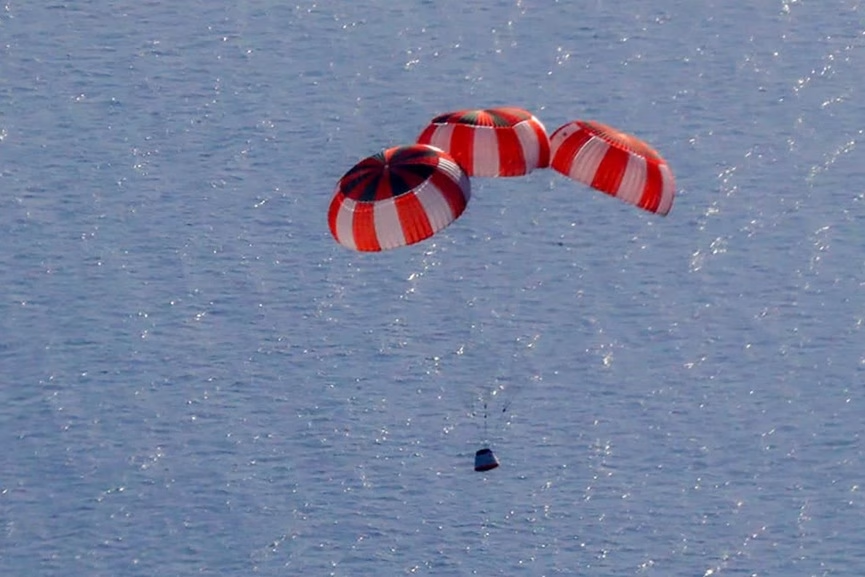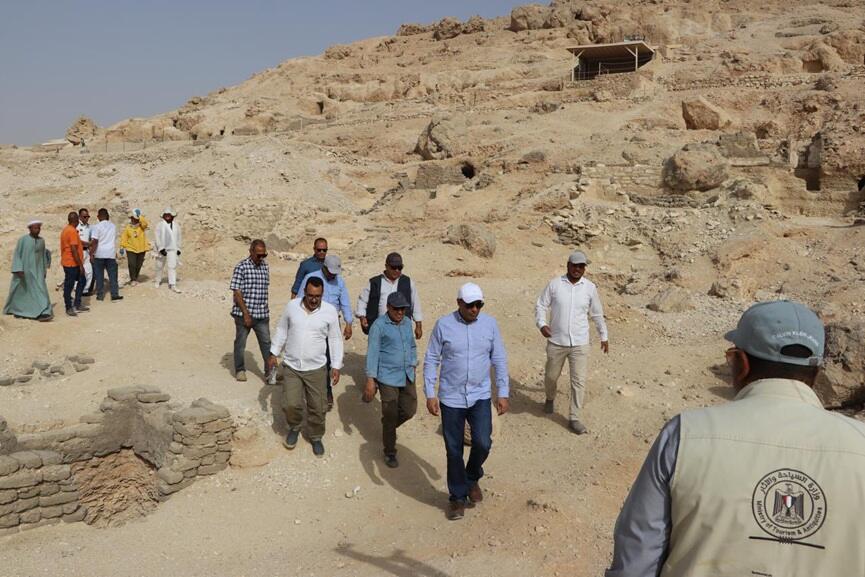Bengaluru: The Indian Space Research Organisation (ISRO) has successfully carried out a crucial test of the main parachutes for the Gaganyaan Crew Module, marking another major step toward India’s first human spaceflight mission.
The test, conducted at the Babina Field Firing Range in Jhansi, Uttar Pradesh, forms part of a series of Integrated Main Parachute Airdrop Tests (IMAT) designed to qualify the parachute system for crewed flight.
The Gaganyaan mission aims to send a three-member Indian crew into space for three days and bring them safely back to Earth. Ahead of the crewed launch, ISRO is testing every key system, including the human-rated launch vehicle, the orbital module, and the emergency crew-escape system.
In a statement, ISRO said the Crew Module’s parachute system includes ten parachutes of four types. The descent sequence begins with two apex cover separation parachutes that remove the module’s protective cover. These are followed by two drogue parachutes, which help stabilise and decelerate the module during its return to Earth.
ISRO successfully conducted a key Integrated Main Parachute Airdrop Test (IMAT) for the Gaganyaan mission at Babina Field Firing Range, Jhansi, on Nov 3, 2025. The test validated the main parachutes under extreme conditions. #ISRO #Gaganyaan
For more information visit… pic.twitter.com/nqCgRmMkDn
— ISRO (@isro) November 11, 2025
Once the drogues are released, three pilot parachutes deploy to extract three large main parachutes, ensuring a safe and controlled touchdown. ISRO noted that the system has been designed with redundancy; two of the three main parachutes are sufficient for a safe landing. The main parachutes deploy in a process called reefed inflation, in which they first open partially before fully inflating after a set time delay, controlled by a pyrotechnic device.
During this test, engineers simulated one of the most demanding scenarios– a delay in the disengaging process between two of the main parachutes. The test validated the system’s structural integrity and load distribution under these asymmetric conditions, confirming its ability to withstand real mission stresses.
A test mass equivalent to the Crew Module was dropped from an altitude of 2.5 kilometres using an Indian Air Force IL-76 aircraft. The parachutes deployed as planned, ensuring a stable descent and a smooth landing.
ISRO said the successful completion of this test marks another milestone in the qualification of the parachute system for human spaceflight. The mission involves close collaboration between the Vikram Sarabhai Space Centre (VSSC), Aerial Delivery Research and Development Establishment (ADRDE), Defence Research and Development Organisation (DRDO), Indian Air Force, and Indian Army.


























